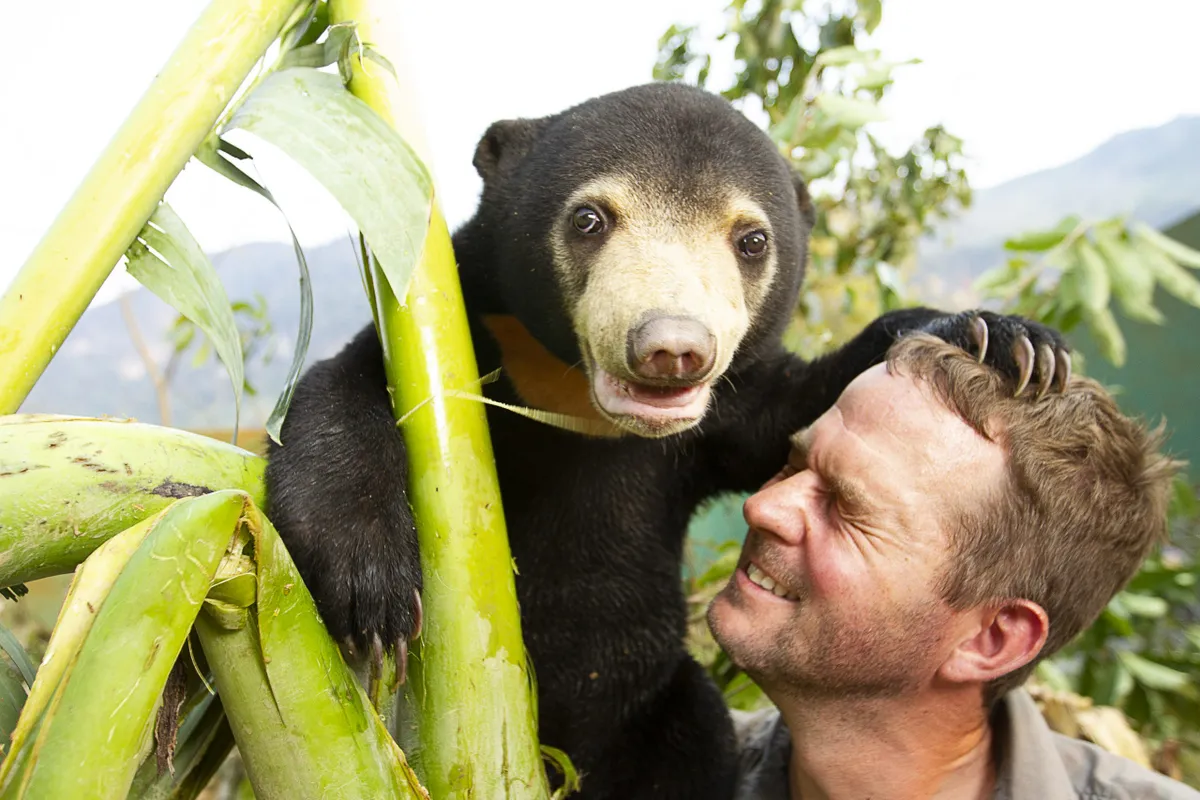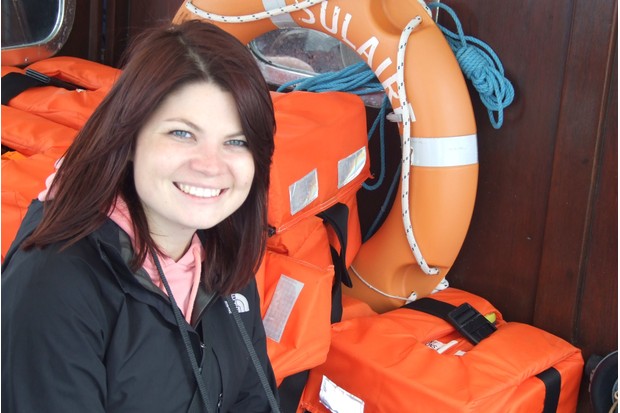In a two-part documentary for BBC Two, Giles Clark travels to Laos in Asia, where sun and moon bears are under threat due to illegal bear bile farming. A pioneering wildlife rescue centre is being built by charity Free the Bears and Giles has arrived to help.
As well as caring for orphaned cubs at home, he is rescuing bears from all over the country and building wild enclosures so liberated bears can live a natural life once more. Giles also releases other rescued animals back to the wild. Bears about the House follows the stories of several sun and moon bears on their road to recovery.
In a special Q&A, Giles Clark talks to BBC Wildlife about working with a wildlife sanctuary in Laos to rescue bears and other animals from the illegal wildlife trade.
When is Bears about the House on TV?
Bears about the House airs at 8pm on 15 and 22 July on BBC Two.
How did you become involved in this particular project?
I’ve known Matt Hunt, CEO of Free the Bears, for for a very long time (15 to 16 years) and we’re good friends. On a number of occasions, he has asked me to come and give him a hand at Free the Bears in Laos, Southeast Asia, but I haven’t personally or financially been in a position to do so until recently.
I have been fortunate to take a considerable amount of time out over the past year to work with Matt as a technical advisor on a project to set up a ground-breaking bear rescue centre in Luang Prabang and help rear sun and moon bear cubs. At no point did I need any persuading as it’s something that I’ve wanted to do for a very long time. This is definitely a project that’s very close to my heart because it combines animal welfare, compassion for wildlife and supports conservation.

How did the project evolve and what are the challenges?
The project is continuously evolving, if for no other reason other than the number of bears and other animals that are coming into the sanctuary. In terms of physical changes, we have built a wildlife hospital; a quarantine area; a small area for pangolins; several bear enclosures and a nursery but the list goes on. The biggest challenge is the scale of the project and the complications of the issues at hand. For example, on one particular day, we rescued five bears from three different locations. We are trying to keep up – to quickly expand facilities to be able to cope with filling up those spaces. Other challenges involve confiscating bears from people who don’t even realise that it’s illegal to keep wildlife.
What is the reward?
When you experience every challenge, you also see bears having a second chance at life. Although, at the moment, it’s not possible to release the bears back into the wild, it is something we are definitely working towards.
At present, we’re taking bears from a life of misery – where they’ve been in a tiny cage devoid of any stimulation – and rehabilitating them. The rescued animals live in a natural enclosure where they can dig up termite mounds; climbs trees; interact; and enjoy all sorts of physical and mental stimulation. You see how incredibly resilient and robust they are and how much enjoyment they get out of their new home – that is the biggest reward.

Tell us about Mary the sun bear – why is she so special?
Oh, my goodness, Mary is incredibly special. She is such a strong character not only at the sanctuary but in my life and I know in Matt’s life as well, she’s a very special sun bear. If you saw the condition she was in when she was first rescued, she was completely malnourished, very frightened and intimidated, and less than half the size that she should have been for her estimated age. But she quickly learnt to trust us and readjusted, building a rapport that was vital for her recovery. At the time of her rescue, we didn’t have any suitable young sun bears to keep her company so she very much relied on myself, Matt and the other staff for companionship. In the wild at that age, she would not have left her mother’s side.
How was Mary the sun bear rescued?
She was confiscated by the forestry administration as she was being transported across the border to what we presume was probably going to be a bear bile farm from the information we have. The sanctuary now has another sun bear called Noy who has become very good friends with Mary. But Mary was special because she was the first bear that I was involved with and because she is also a representation of the entire bear conservation story in that part of the world. Her mother would have undoubtably been killed to acquire her and Mary would have had the most traumatic start in life. She’s turned that around herself and is not dependent on us for human contact anymore, yet she’s always quite willing to come over and see the keepers. Mary is always going to be a special bear and my hope for her is that she’s going to help raise awareness of the illegal wildlife trade and bear bile farms.

What have been the project’s biggest achievements?
The advances the project has made, in terms of infrastructure that I previously mentioned and establishing and cementing the relationship of Free the Bears with the local and national authorities, which are seeing more bears come in than ever.
Wildlife rescue has to be in partnership with the national authorities and we are now starting to get some tangible results. The partnership will allow us to really begin to be more effective and close bear bile farms in Laos. That, for me, from a welfare perspective, is really the Holy Grail at the moment when it comes to these bears.
In terms of conservation, it’s not just about individual bears, it’s not just about welfare. Some would argue that what we’re doing is nice but it’s not effectively saving bears in the wild. I would argue that it actually is because without the sanctuary the authorities would not be able to do proper law enforcement to support conservation because there would be nowhere for these animals to go. How can you confiscate animals from an illegal wildlife trade if there’s no infrastructure and the ability to deal with them? So, we’re there to support the Laos government and in doing so it’s allowing them to start to uphold their commitment to end illegal wildlife trade and put a stop to bear bile farms in the country.

How do you feel after filming Bears about the House?
I am so grateful to have the privilege to spend 12 months in Laos as it was definitely enlightening in many senses. I really feel that I’ve made a contribution, which is important, and that’s definitely not going to stop. I’m also grateful for having such a wonderful team around me, in terms of filming the documentary. I worked with the same crew while filming Big Cats About the House and Tigers About the House: everybody involved is passionate about what we do, which is ultimately about trying to support conservation and wildlife organisations.
One of my hopes for Bears about the House is it helps raise awareness of not just the issue for bears but conservation in general and the wildlife trade in Asia. I’m very excited about potentially getting support for conservation on the frontline. Viewers are going to fall in love with Mary and the other characters that we’ve spent so much time with. I really see these individual bears as being ambassadors for conservation.
Main image: Mary the sun bear and conservationist Giles Clark. © Cherique Pohl/BBC
